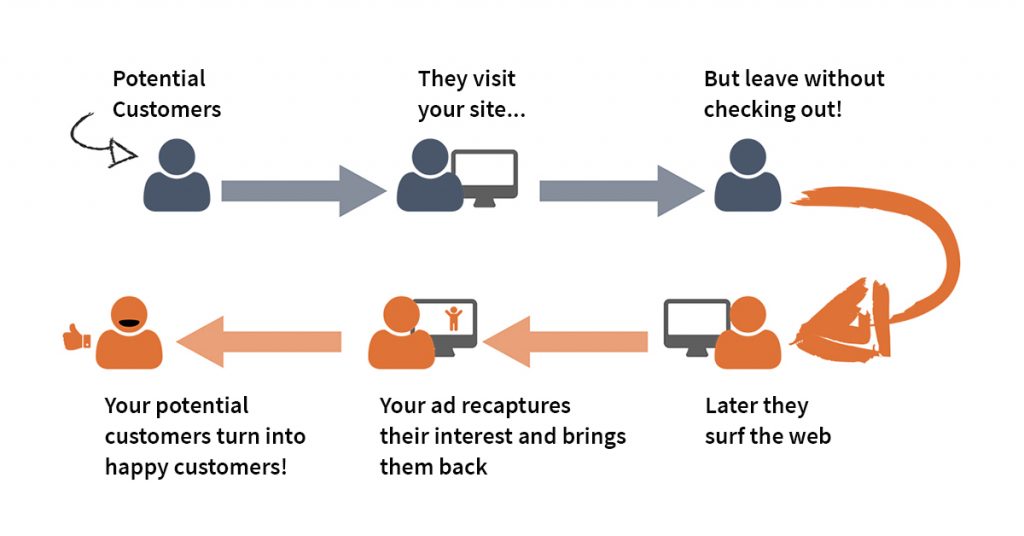5 Ways of Using Marketing Automation to Reduce Your Customer Churn Rate
Marketing automation is a versatile way to interact with customers faster and prevent them from leaving your product. Learn how to track your churn rate or, better yet, beat it to the punch.
Written by Michael Habiger

Churn rate is an important measurement of a business and how successful it is in retaining customers. This is a factor difficult to understand. Even those familiar with churn rate disagree on how to decide what the number is and how to apply it.
For many, it depends on the type of business relationship you have with your customers. Here you will find information on what churn rate is, why it matters, and how to improve it.
What is churn rate and how to measure it?
The definition of churn rate at its simplest is the measurement of customers you’ve lost over a certain period of time as opposed to your total number of customers. The formula can be just that simple. Divide the total number of lost customers by their total number.
This is when you start to come into trouble. First, you need to decide how you identify your total number of customers. Some consider customers by sales, others by subscriptions or even by accounts.
The next problem is deciding what you think to be a churned customer. If you are considering your customers by subscriptions, do you take into account the loss when they cancel, or when their subscription runs out?
Once you have made your decisions about the numbers themselves, the calculation becomes as simple as just plugging them into the equation.
A good churn rate is going to depend on the business itself. No one wants to lose even one customer after all the work you have invested into developing them in the first place. According to Statista, the average churn rate across six major industries is 23.5% with cable having the highest churn rate at 28% and travel having the lowest at 18%.
Looking at economics and extenuating factors may play a major factor in what an acceptable churn rate is. It is important to realize how many customers you can lose on average to be able to determine whether you have a good or a bad churn rate.
Why does reducing churn rate matter to your business?
Many businesses look at several different kinds of churn rates. This can include:
- Monthly churn rate
- Annual churn rate
- Probability churn rate
These metrics provide you with a wealth of information about where your business is and where it’s going. By utilizing churn rate monitoring practices, you can see what decisions directly lead to losing customers.
For instance, your company made a decision to alter the price of a product. If you notice a significant rise in your churn rate, it will be evident that the price change was not well received and needs to be reconsidered.
Once you can identify which decisions were good and which failed, you can predict their outcome for your brand in a more reliable way. Churn rate monitoring and analysis can be used to make sure your business performance is healthy and generates better ROI.
How marketing automation helps reduce churn rate and improve customer retention
Understanding the churn rate is one thing. Applying it to your business is another matter. It is possible to utilize marketing automation to reduce the churn rate and improve customer retention. Let’s find out what it means in the real world.
Personalized customer service
Every customer wants to feel special. This is why communication with your customers is so important. Make sure you are telling everyone what you are doing and when you are doing it. It’s always a good sign when there is a sense of involvement with the community.
- Set milestones for your customers when they get involved. This can include different levels of recognition depending on where they are in terms of their purchases.
- Offer discounts to your customers when they invest in upgrades. This encourages them to not only purchase more but to be more invested in your company as a whole. It also makes them feel special for having the newest upgrade for a cheaper price.
- Set up a referral program to acquire new customers through old customers for certain timeframes. This allows them to feel invested in your business and spread the word while receiving something for their trouble.
Every time there is communication with a customer, it is a chance for further involvement. Make sure there is always a follow-up to customer service interactions. You definitely want to know what your customers think about the way they were treated and whether their problem was resolved. If there is a negative feeling after the interaction, offer a pathway to resolve the matter further.
Social media automation
Social media is still a very integral part of our everyday life, so engaging with your customers there remains as important as ever. Using Facebook messenger marketing allows you to maintain contact with existing and new customers in a format they identify with as a part of their lives.
Facebook Messenger Marketing is the use of Facebook Messenger as a conversational channel for reaching individuals at scale with targeted messages.
Basically, it’s SaaS digital marketing on steroids. Instead of bombarding your customers’ inboxes with various campaigns, you move it to Facebook Messenger. Use social media analytics tools to see which channels are giving you the best results.
The best part of any messenger marketing automation is it takes all the guesswork out of social media marketing. You do not have to sweat over sending out messages. They are delivered automatically in the most engaging way possible.
Email marketing
Taking into account the benefits of email marketing, it is highly important to make sure you craft every email with care. Use an email follow up tool to automatically personalize the campaign when a new customer signs up.
This kind of automation is just as important for emails regarding any action, such as confirmation and/or cancellation. This builds confidence which could lead to a return if it is a cancellation or further actions like finishing onboarding or even upgrading their account.
- Abandoned cart email. When there is an incomplete action or an abandoned cart, an email needs to be sent out to give a little nudge. Make sure the wording is comforting rather than berating. Regardless of why they left the action unfinished, people need to keep thinking about it in a positive manner.
- Emails for special occasions. Customers feel special when special dates are remembered. Send out emails congratulating customers on these dates like birthdays and such. Offer them a discount or a free product as congratulations.
- Announcement emails. Keep your customers informed about upcoming products or updates they can be excited about. You can provide details about why the new offers are exciting and what they can do to be the first in line to get their hands on them. Make sure they feel special for having the information so they will feel encouraged to talk with others.
Engaging your customers through multiple platforms is important, so you may want to offer the ability to sign up for newsletters. They can either be sent out as an email or offered as a website newsletter subscription. You can gauge engagement with how much the email is being read. Offer certain incentives such as personalization hidden within the email for better customer engagement.
Retargeting

Once customers have visited your website, you want to make sure you stay on their minds. Retargeting does this by making sure a banner with your advertisement shows up on different pages they may visit. Many consumers do not even realize this is happening and assign retargeting to a coincidence.
Retargeting can be used in both social media as well as through search engines. Make sure you are maintaining a position of authority by displaying visually impactful ads to the users while they are browsing the web. This will lead to higher return customers as well as initiate new loyal customers.
Customer segmentation
Always remember that not all customers think alike. Taking the same targeted approach to your entire audience is an ineffective investment and it does not provide a connection with consumers. Although a more specific approach is almost always accompanied by higher impact costs, it comes with a lower cost per result.
No matter the communication channel, always segment your audience. Identify the specific likes and dislikes of your target audiences, then create different marketing campaigns specific to each group. All your customers will feel special and engage with you as such.
Final words
As you can see, the churn rate is an important tool when used properly. You can identify where you are not thriving and make targeted, specific approaches to reducing the churn rate.
Make sure to keep a close watch on your churn rate moving forward to make sure you will not backtrack into unfriendly territory. With the right maintenance and due diligence, you will have everything you need to not only understand your customers better but effectively reach them and boost ROI. Taking action now will provide your company with the tools to remain competitive in uncertain times like these.





